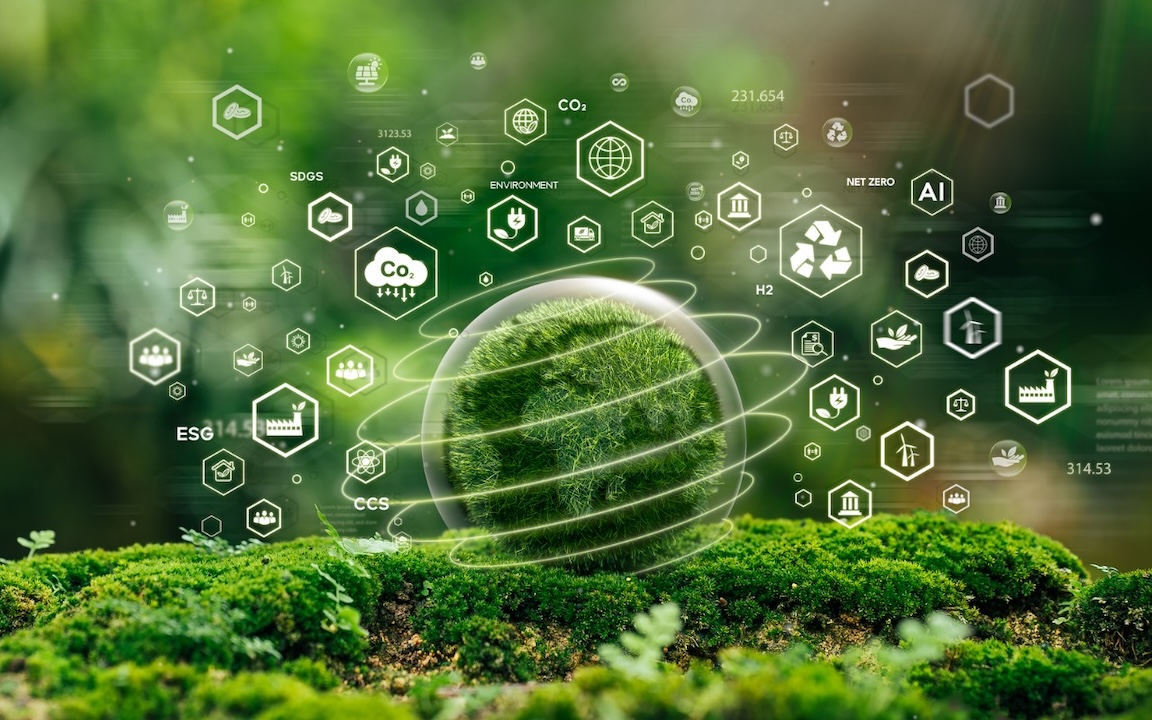
EEMI Deputy Director Dr. Eric Dano has been leading a project to help the Dell Technologies company increase the recycled content of its computer product line. The project, which began in the Fall 2024 semester, continued with the Spring 2025 Master’s Capstone Project for grad students Chaitanya Aggarwal, Rawad Bou Alwan, Daniel Fisher, Arjun Lenin, Edward Ssemambo, and Myo Hlaing Win. Dell incorporates recycled content into many of its computers and packaging, aiming for a circular economy model.
The company uses recycled metals like steel, aluminum and copper along with several types of recycled plastic from e-waste, and recycled ocean- bound plastic in products and packaging. The GW team assisted Dell in achieving its ambitious sustainability goals of a achieving a 50% recycled/reused/low-carbon material content in products by 2030.
Our GW project addressed this by looking holistically into how Dell can meet it 50% recycled content by weight goal, while also examining the GHG emission, material cost and production cost ramifications with any proposed solution, while progressing towards its circular economy objectives. Weight-based recycled content alone, does not accurately reflect true environmental impact, particularly when considering the varying emissions profiles of different materials. As part of this effort the students also analyzed the reduction in raw materials and reduction in end of life scrap due to increasing the recycled content in products.
A case study was also done on how to dematerialize elements of Dell’s personal computer product line. To assess the optimal amount of recycled content, by material, the team developed a Python based Genetic Algorithm (GA) application to guide sustainability-focused material selection for Dell. By modeling the recycled content percentage of each material as a gene, grouping multiple genes into a chromosome (test case) and optimizing across GHG reduction, cost impact, and percent recycled content by weight, the GA framework provided a rigorous, adaptable platform for multi-objective trade-off analysis. The algorithm consistently converged on high-utility solutions, particularly favoring near- maximal recycled content for high-impact materials like steel. These results align with literature insights that highlight steel’s large emissions footprint and recycling potential. The Python-based GA confirmed that substantial GHG reductions can be achieved even in configurations constrained to a three-material system.
A MATLAB version of the GA application was also created as part of this effort to run on the EEMI high performance computing node. The GA model model showed that high recycled content levels (80-85%) are possible without incurring prohibitive cost penalties. Environmental metrics, such as GHG recyclability scores, dominated utility weighting, indicating that sustainability objectives can take precedence without compromising viability. The models’ convergence behavior and utility breakdowns provided Dell with a transparent, data-driven method to benchmark configurations against emissions targets. Compared to traditional optimization methods, GAs offer several key advantages: global search ability, robustness to nonlinearities, adaptability to changing constraints, and ease of integration with existing digital tools.
The dual implementation—in Python for system integration and in MATLAB for high performance processing—supports broad usability across Dell’s teams. Ultimately, this project illustrated that Genetic Algorithms can play a pivotal role in advancing circular economy strategies. By embedding sustainability intelligence into early-stage material decisions, Dell—and the broader industry—can accelerate their transition toward low-carbon, resource-efficient product systems. A short video of the project was highlighted at the Alliance Climate Divide that was held in the Jack Morton Auditorium on April 17-18, 2025, organized by GW’s Alliance for a Sustainable Future. That video can be seen at this link: Dell Computer Recycled Content Project.


